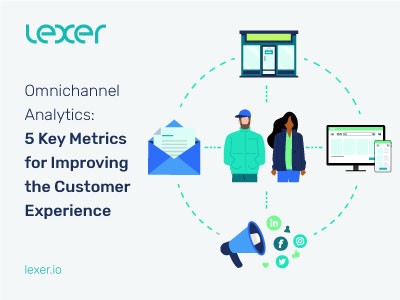Get a Unified View of Your Marketing
March 11, 2021You can also find this article on the Simon Data website: https://www.simondata.com/resources/get-a-unified-view-of-your-marketing/?utm_campaign=customer-view&utm_medium=partnerships&utm_source=cdp institute&utm_content=blog
Awareness… Research… Email… Cart abandonment… Facebook… Snapchat… Acquisition… Conversion… TikTok… Twitter… Reactivation… Instagram… LinkedIn… SMS… Physical mail… Pinterest… 1st-to-2nd purchase… Discord… LTV reporting… Cooling… Churn… &c.
The proliferation of channels and the increasingly digital nature of any business creates a dizzying complexity for marketers to tackle. Unfortunately, outdated organizational concepts still pervade most departmental structures because of how positions are created on an ad hoc basis.
A decade ago, titles like Content Marketing Manager and Social Media Marketing Manager started popping up for the first time. They were intended to fill a gap that had been created by burgeoning digital cultures. As new channels emerged, marketing teams added new roles and functions to accommodate them, creating silos.
For example, a team responsible for email may have no communication with the team creating advertising content. Even if those digital functions sit under the same umbrella, they may have no meaningful contact with the group responsible for creating in-store experiences at a physical location and no way to share insights gathered from their respective efforts.
Silos don’t just exist inside departments but plague most companies. For instance, several issues crop up when Data or Engineering own a critical chunk of the marketing process like segment-building: The first is that you end up with overly broad, static audiences because segment-building is a slow and/or cumbersome workflow.
If you employ more nuanced segmentation, you end up outsourcing a sizable marketing strategy to the person in charge of actually building the segments. Or your data scientist is functioning like a short-order cook of database queries, which is a waste of valuable human intelligence and creativity, and it still will take an unnecessarily long time.
The Marketing HQ: Centralized User Interface
The intuitive solution to these silos is to simply use an integrated HQ for all marketing activities. Here’s what that would look like:
Data processes
Here, every role would share the same segments, which are updated on a real-time basis. This way, the segments used by the Email Manager would be the same exact segments available to the Social Media Manager.
The ability to organize teams around customer data gives a fantastic amount of organizational flexibility. For instance, TJ Papp (Senior Advisor, formerly VP at Nike, Kenneth Cole, Victoria’s Secret) has seen great success with teams organized around lifecycle stages (Awareness, Conversion, Retention). Depending on your brand, you might consider organizing across different vectors, like by persona or region.
This is the non-trivial value of giving marketers the ability to control and play with their data: they start to get better, more exciting ideas. Anyone who spends enough time playing with data starts to understand which variables are over- or underrepresented, which approaches to segmentation yield the most exciting results, and how different variables should be treated in marketing messages, among other things.
When the friction of execution is lowered, people start to have more ideas because they’re spending time in the trenches doing the work, and the result happens much faster and more efficiently.
End-channel orchestration
At Simon Data, we say that we integrate your data to your end-channels. One way of saying this is that we bring together “listening” and “speaking” (as a metaphor, y’know?). But listening and speaking exist more on a continuum — even a public speaker can read an audience in real-time and make adjustments. So really, another way to think about it is that your technological ecosystem deals with “listening” and “speaking” discretely, and we repair the decoupling.
By housing data, segmentation, automations, point solutions, and end-channels in a single place, you, your team, and your company can gain a window into everything that’s happening with your brand’s marketing. This can be helpful for maintaining consistency and avoiding redundancies or excessive messaging. It can also serve to prove the value of your marketing efforts to the rest of the organization.
A zero-gap customer profile living inside your centralized UI for data and orchestration untangles a lot of internal knots. If profiles can persist in real time, segments can remain up to date from campaign to campaign.
Reporting and analysis
The primary beneficiary of the centralized marketing hub will be your strategy. The perfect strategy is only perfect for as long as it’s not in motion. Unless that strategy is built around gathering intel and flexibly adjusting as you go, that strategy will get long in the tooth faster than a beaver lost in the desert.
The only way to prevent your strategy from going to seed is constant evaluation. This is just as common sense as linking input with output (as in data + orchestration or listening + speaking). If strategy is the most critical facet of any business initiative, why does fractured reporting plague many marketing programs?
The first advantage is simply time savings and perhaps a little more hair on your employees’ heads. Rather than build a slippery spreadsheet that someone’s always asking for or questioning its up-to-date-ness, all of your reporting can pool into the centralized UI. From here, you can get a baseline comparing past and present campaigns across any important metric, such as a cross-channel or longitudinal segment performance. This would come in handy when you’re trying to — for instance — see how an acquisition-focused segment has performed over the last x-number of campaigns to see if acquisition efforts for this segment are improving.
This is where things get magical. If you somehow managed to learn that there’s a performance downturn for a particular segment — let’s say it’s highly targeted and business-critical — but you don’t have a self-serve segmentation platform. Someone from marketing has to bother someone in a technical role to see if it’s an issue with the segment variables and not with the campaign itself.
This puzzled marketer sussing out the acquisition dip would inspect the segment variables in their centralized marketing platform. She might find that the performance was quite high on the east coast, but the west coast dragged the overall average. Or maybe men were overrepresented in conversions, meaning the team must now optimize different comms to appeal to women, perhaps even splitting the segment permanently.
While the above sounds like a small tweak, without the capabilities nested safely in the marketing function, the above is something like a four-week job at most companies (though it likely would never be attempted, even if it was reported).
If you’d like to learn more about how a digital marketing headquarters can save you time and energy while uncovering market opportunities, check out Chapter 6 of our CDP Buyer’s Guide, “What Outcomes Should a CDP Enable?”


